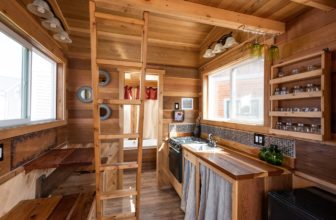When you carry out a regular house renovation project, the process is pretty straightforward – you first evaluate the general condition and look for the common problems that may need fixing, like leaky faucets or cracked roofing.
However, restoring historic houses requires some more work beforehand. Firstly, you need to choose whether you only want to restore it to its former glory or rehabilitate it with modern technology. Then, either you or a contractor should assess the house’s condition and look for what needs to be done. Historic house restoration can be a tiresome task, but it doesn’t have to be so. Below, you will find ten tips that will help you get started and make the most of your freshly renovated home. Read on!
Have a Clear Vision
What do you want to achieve? Do you want to preserve the original layout and décor, or would you prefer to modernize it with the latest features? If you want to preserve the original look and feel of the house, you will have to find someone experienced in historic home restoration as well. The answers to these questions will affect the way the house ends up looking, but also how much money the project will cost. If the projections are rather high, then depending on your circumstances, you might consider taking out a loan, get in contact with an inheritance funding company (here you can learn what is advance inheritance funding), or, reconsider the scope of the planned works.
Figure Out if the House Needs To Be Rehabilitated
Depending on its location, your historic house may have to adhere to certain standards and regulations, which means it needs to be rehabilitated. While this may seem like an expensive choice, it’s definitely worth considering. Rehabilitating your house will enable you to modernize the home’s interior and exterior without having to worry about historical preservation agencies getting mad at you.
Choose New Features That Are in Line With Your Vision
Whatever your vision is, there are lots of options to choose from when it comes to replacing old features with new ones. For example, if you want to keep the interior design simple and elegant, you can opt for furniture pieces made of wood and leather. If, on the other hand, you want your home to look more modern, you can go for metal, plastic, and glass. If any of these options seem rather costly, you should browse through the internet in search of discounts and coupons at websites such as couponninja.com to avoid overspending on furniture and other elements.
Figure Out What Needs To Be Done
Once you’ve figured out your vision, you have to assess the house’s condition and see what needs to be done before you start renovating. If you are going to do the renovation process yourself, make sure you have all the necessary tools, knowledge, and skills.
Make Sure Everything Is Ready Before Starting
Once you’re ready to start the renovation process, make sure you have all the necessary products and equipment on hand. Doing so will help avoid any delays and make the entire process easier for both yourself and any contractors that might be helping you with the project. Also, make sure your contractor is fully insured before signing a contract with them – that way, you won’t need to worry about any possible accidents or injuries.
Stay On Schedule
When you’re working on historic house restoration, there is no room for delays. This is especially true if you’re going to restore the entire house yourself – if you fall behind and start getting behind schedule, you might run into problems with local authorities, and you might have to put the project on hold.
Don’t Skimp On Materials
If you want your historic house restoration to be a success, make sure you use the best quality materials possible. This will make your home look better and last longer, which means it was worth the investment. Keeping in mind that the materials you use will affect the final appearance of your home, it’s important to stay on budget.
Prepare For Emergencies
While you’re working on the historic house restoration project, make sure you have everything you need to deal with any possible emergency. For example, if your contractor is doing the work, make sure they have all the necessary equipment and tools to deal with any problem they may encounter. If you’re doing the renovation on your own, be sure to keep a first-aid kit handy and plenty of towels and blankets. They will come in handy during any unexpected water or fire issues that may arise.
Make Sure Everything Works Properly Before Moving In
Once you’ve finished the repairs and new features are in place, make sure they all work properly before deciding to move in. There is nothing worse than moving into a new home only to realize that the air conditioner isn’t working or that one of the bathrooms can’t be used because of plumbing problems.
Enjoy Your Newly Renovated Home!
Remember, historic house restoration requires lots of hard work, but it doesn’t have to be a painful process – with these tips, you can make it easier and faster so you can rest assured that the end result will look great.
To Sum Up
While renovating historic houses, you’ll be able to see for yourself how much a house can change with a little bit of work and effort, and you’ll also enjoy the experience of living in a unique house. If you’ve just started renovating an old structure, make sure you follow the tips above!





